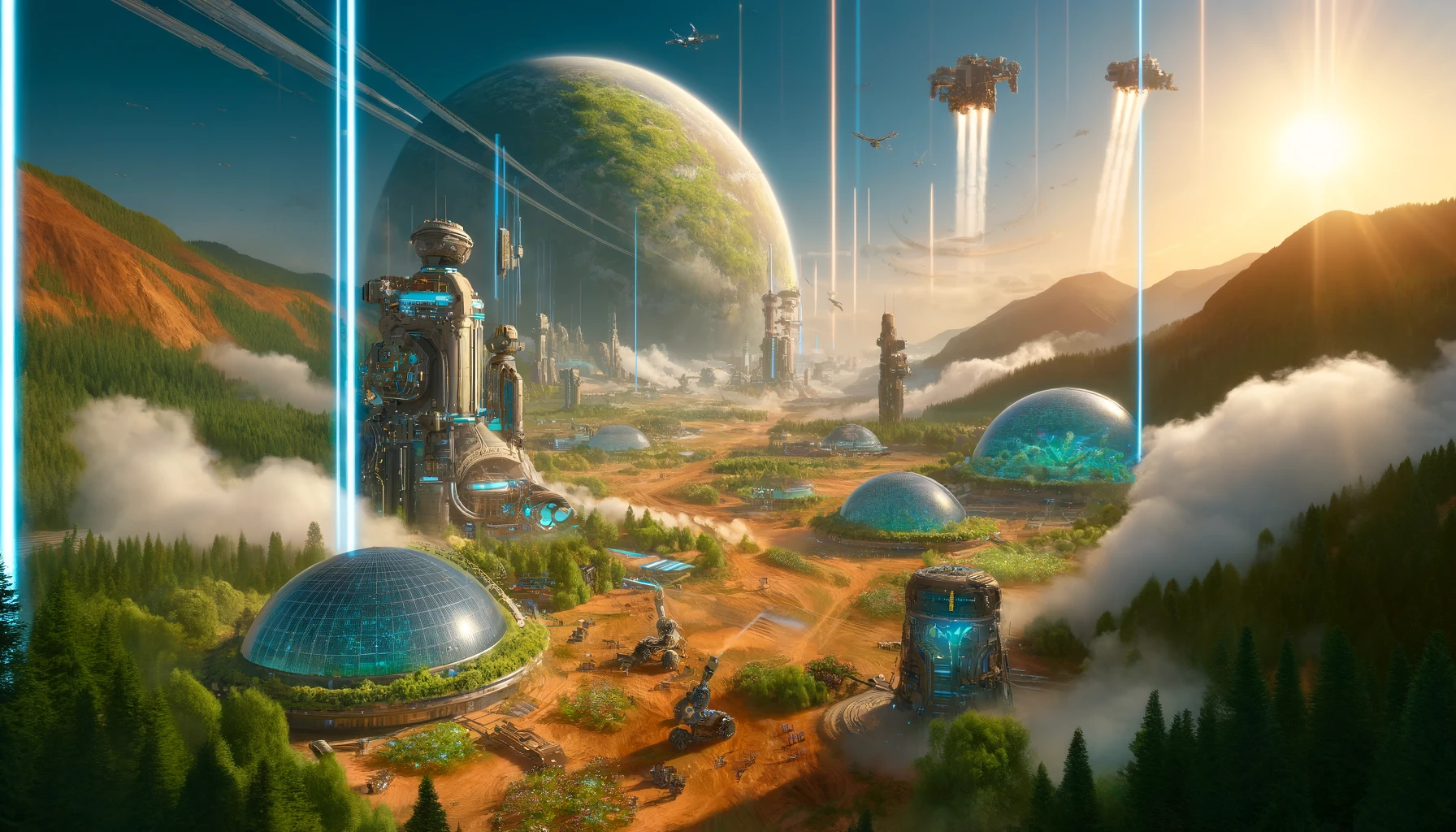Introduction
Terraforming, the process of transforming a planet’s environment to make it habitable for human life, is a cornerstone of expansion in the Canadian Expanse. In the 2280s, this advanced technology has allowed humanity to create new homes among the stars. This article delves into the intricate science of terraforming, the formidable challenges it poses, its environmental impact, potential dangers, and the significant rewards it promises.
The Process of Terraforming
Terraforming in the Canadian Expanse involves a series of complex scientific and engineering feats aimed at transforming the atmosphere, temperature, surface topography, and ecology of a planet. The process can be broadly categorized into the following stages:
- Atmospheric Modification: The first step is to create a breathable atmosphere. This involves the introduction of oxygen-producing plants, algae, or bacteria, and the release of greenhouse gases to thicken the atmosphere and raise temperatures.
- Temperature Regulation: Warming or cooling the planet to maintain a stable climate is crucial. Techniques such as deploying orbital mirrors to direct sunlight or introducing greenhouse gases can help achieve this.
- Water Introduction: Liquid water is essential for life. Melting polar ice caps, redirecting comets, or creating artificial lakes and rivers are potential methods to introduce water.
- Soil Fertilization: Creating fertile soil involves adding essential nutrients to the planet’s surface, allowing plants to grow and contribute to the oxygen and carbon cycles.
- Biosphere Development: Introducing a variety of plants and animals to create a self-sustaining ecosystem is the final step, ensuring long-term habitability.
Challenges of Terraforming
Technological Hurdles
While terraforming technology has advanced significantly, the energy and resources needed to transform an entire planet remain immense. Even with the technological prowess of the Canadian Expanse, achieving stable, habitable environments requires continuous innovation and refinement.
Timescale
Unlike earlier predictions, modern terraforming in the Canadian Expanse can take as little as a year to build the necessary infrastructure and begin the seeding process. However, creating a fully stable and self-sustaining environment can still take decades, demanding long-term commitment and coordination.
Ethical Considerations
Terraforming raises ethical questions about the right to alter an extraterrestrial environment. There is ongoing debate about whether humanity has the moral right to change a planet, potentially disrupting any existing ecosystems or microbial life.
Environmental Impact
Ecological Balance
Creating a new ecosystem involves carefully balancing flora and fauna. Introducing non-native species can lead to unintended consequences, such as invasive species disrupting the new environment or failing to adapt, leading to ecological collapse.
Resource Depletion
Terraforming requires vast amounts of resources, which could strain other colonized planets. Mining asteroids or other planets for resources is a potential solution, but it adds complexity and risk.
Climate Stability
Maintaining a stable climate on a newly terraformed planet is challenging. Small changes in atmospheric composition or temperature could lead to drastic environmental changes, potentially undoing years of progress.
Dangers of Terraforming
Unforeseen Consequences
The long-term effects of terraforming are unknown. Introducing new elements and organisms to a planet could have unforeseen consequences, potentially creating hostile environments.
Political and Social Risks
Terraforming projects could become sources of conflict over control and ownership. The political and social implications of transforming a new world are significant and must be managed carefully.
Economic Costs
The economic costs of terraforming are astronomical. Funding such projects requires international cooperation and significant investment, which could impact other critical areas of development.
Rewards of Terraforming
New Habitats
The primary reward of terraforming is the creation of new habitats for human life. With growing populations and environmental challenges in the Canadian Expanse, finding new habitable worlds offers a long-term solution to resource and space constraints.
Scientific Advancements
Terraforming drives scientific and technological advancements in fields such as environmental science, biology, and engineering. These advancements can have broad applications, benefiting life on newly colonized planets.
Economic Opportunities
New planets offer economic opportunities in terms of mining, agriculture, and tourism. The economic potential of a habitable planet is immense, driving growth and innovation.
Survival of Humanity
Ultimately, terraforming is about the survival and expansion of humanity. Creating new homes in space ensures the long-term survival of the species, safeguarding against potential global catastrophes.
Conclusion
In the 2280s, terraforming represents one of the most ambitious endeavors humanity can undertake. While it presents significant challenges and risks, the rewards are equally profound. As technology advances and our understanding of planetary science deepens, the dream of transforming distant worlds into habitable homes has become a reality. The journey to that future requires careful planning, ethical considerations, and global cooperation to ensure that humanity’s expansion into the cosmos is a responsible and sustainable venture.




